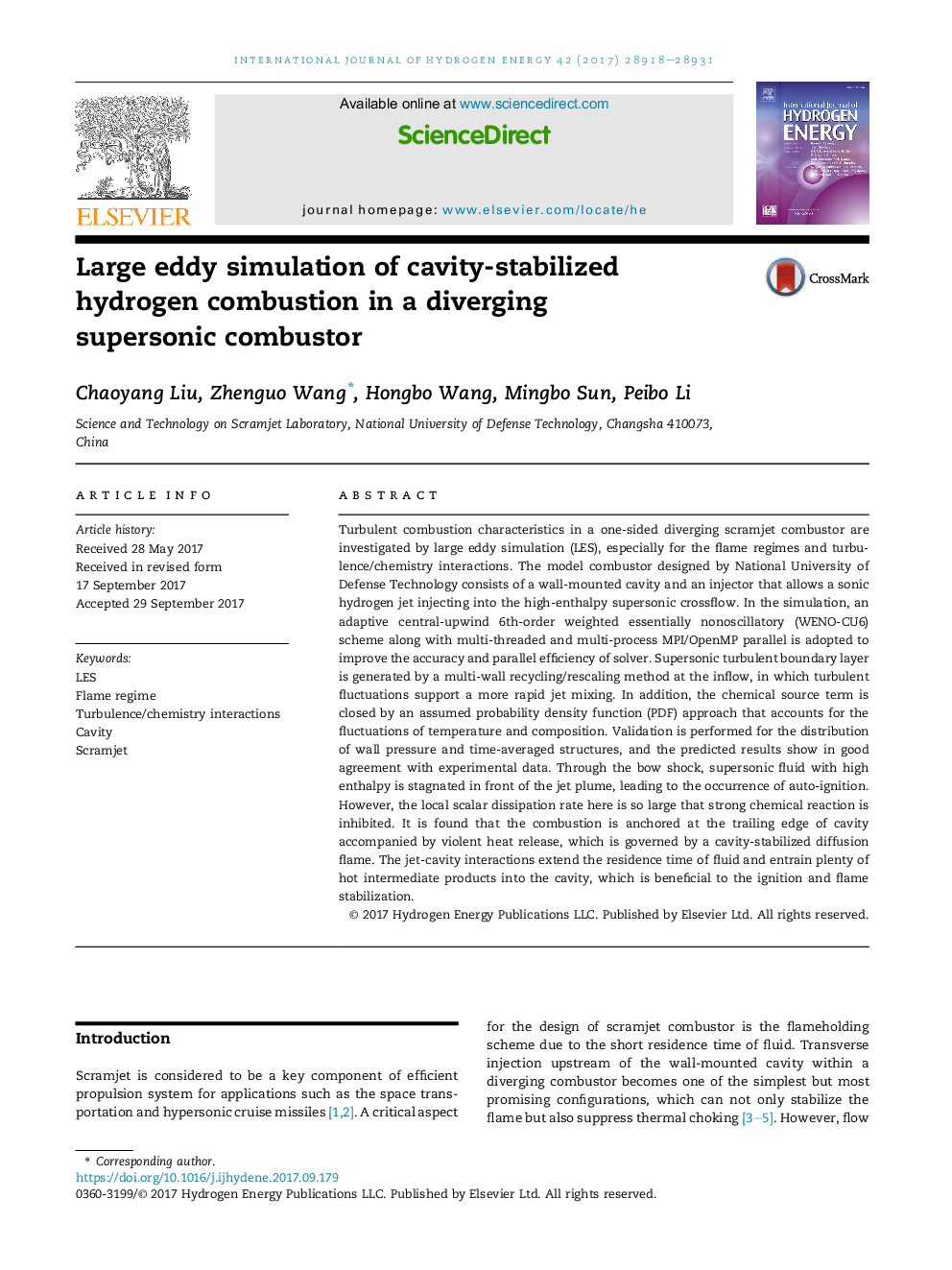| کد مقاله | کد نشریه | سال انتشار | مقاله انگلیسی | نسخه تمام متن |
|---|---|---|---|---|
| 7709321 | 1497329 | 2017 | 14 صفحه PDF | دانلود رایگان |
عنوان انگلیسی مقاله ISI
Large eddy simulation of cavity-stabilized hydrogen combustion in a diverging supersonic combustor
دانلود مقاله + سفارش ترجمه
دانلود مقاله ISI انگلیسی
رایگان برای ایرانیان
کلمات کلیدی
موضوعات مرتبط
مهندسی و علوم پایه
شیمی
الکتروشیمی
پیش نمایش صفحه اول مقاله

چکیده انگلیسی
Turbulent combustion characteristics in a one-sided diverging scramjet combustor are investigated by large eddy simulation (LES), especially for the flame regimes and turbulence/chemistry interactions. The model combustor designed by National University of Defense Technology consists of a wall-mounted cavity and an injector that allows a sonic hydrogen jet injecting into the high-enthalpy supersonic crossflow. In the simulation, an adaptive central-upwind 6th-order weighted essentially nonoscillatory (WENO-CU6) scheme along with multi-threaded and multi-process MPI/OpenMP parallel is adopted to improve the accuracy and parallel efficiency of solver. Supersonic turbulent boundary layer is generated by a multi-wall recycling/rescaling method at the inflow, in which turbulent fluctuations support a more rapid jet mixing. In addition, the chemical source term is closed by an assumed probability density function (PDF) approach that accounts for the fluctuations of temperature and composition. Validation is performed for the distribution of wall pressure and time-averaged structures, and the predicted results show in good agreement with experimental data. Through the bow shock, supersonic fluid with high enthalpy is stagnated in front of the jet plume, leading to the occurrence of auto-ignition. However, the local scalar dissipation rate here is so large that strong chemical reaction is inhibited. It is found that the combustion is anchored at the trailing edge of cavity accompanied by violent heat release, which is governed by a cavity-stabilized diffusion flame. The jet-cavity interactions extend the residence time of fluid and entrain plenty of hot intermediate products into the cavity, which is beneficial to the ignition and flame stabilization.
ناشر
Database: Elsevier - ScienceDirect (ساینس دایرکت)
Journal: International Journal of Hydrogen Energy - Volume 42, Issue 48, 30 November 2017, Pages 28918-28931
Journal: International Journal of Hydrogen Energy - Volume 42, Issue 48, 30 November 2017, Pages 28918-28931
نویسندگان
Chaoyang Liu, Zhenguo Wang, Hongbo Wang, Mingbo Sun, Peibo Li,